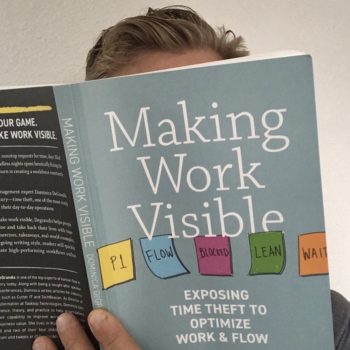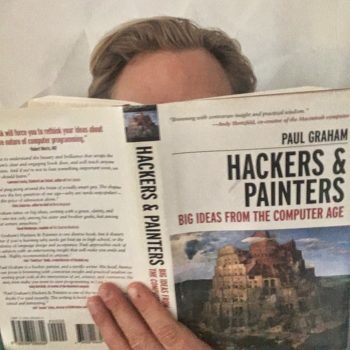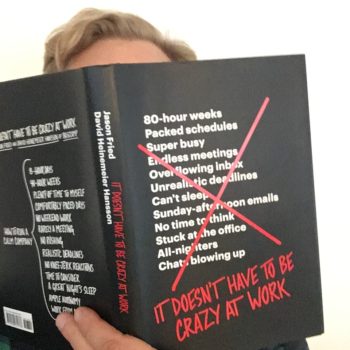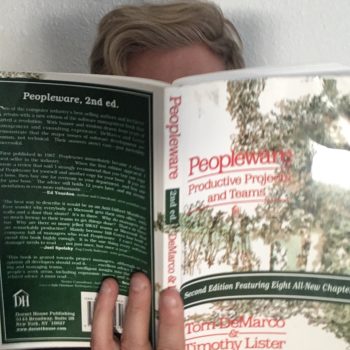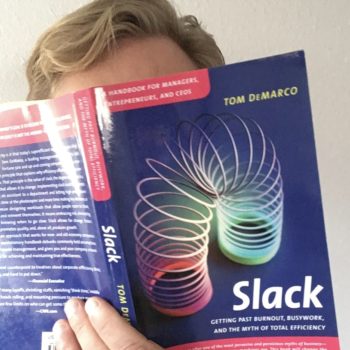
Slack
Getting Past Burnout, Busywork, and the Myth of Total Efficiency
Categories:
CTO,
Engineering Manager,
Product Manager
How strongly do I recommend Slack?
8 / 10
Review of Slack
Slack is a good read for engineering leaders who aim for 100% utilization, pointing out the missed opportunities that downtime and slack provide.
With slack in our production systems and schedules, we can better respond to customer requests and graduate to a more iterative, collaborative, and agile development process.
Top Ideas in This Book
- Your software production systems need slack time to maximize customer value delivered
- Middle management is where reinvention happens
- People under pressure don’t think faster
- Project managers should stop treating goals like schedules
- Engineering managers fail when they try to introduce slack by taking on individual contributor work
Your software production systems need slack time to maximize customer value delivered
Executives train and judge managers by efficiency, specifically utilization. Nobody wants to pay for an engineer to sit around, right? We call employee downtime under-utilization and it’s a bad, bad thing.
Here’s the rub. Having slack in your system is good and not just for employees, but also for the customer and company.
In software engineering, slack lets you improve several of the four success measures of software delivery:
- Respond to customers faster, decreasing Lead Time
- Increase quality, decreasing Change Failure Rate
- Build systems of reinvention to increase Deployment Frequency
Middle management is where reinvention happens
DeMarco calls for the return of middle managers.
Sitting between strategy and execution, middle managers have tremendous influence on the direction of the company. Software engineering managers specifically have the opportunity to plan and schedule their team’s work, granting slack to the production s system.
In this slack lies the opportunity for reinvention – new features and solutions or even whole products, new ways of automating and systematizing, and new ideas for individual and team growth.
Individual contributors can’t do reinvention alone; they need the support and space provided by middle managers.
People under pressure don’t think faster
Knowledge work doesn’t respond particularly well to management schedule pressure. Knowledge work is about thinking and we can’t just think faster.
Conversely, when pressured to think faster we usually start cutting corners.
I’m a big fan of “maxing out” periodically – using periods of high intensity to elevate and reset our idea of what’s possible. But you can’t always have the pedal to the metal. You need both deload periods and slack.
Project managers should stop treating goals like schedules
Here’s a recipe for disappointment and failure – treat goals and schedules interchangeably.
Why do we confuse goals and schedules? Because we don’t want to disappoint our boss. Because we’re optimists. Because we probably weren’t trained to separate the two, so we don’t know any better.
Whenever I talk about goals, I first lead with a schedule clause. “Well, we’re scheduled for a February 15 launch, but internally we’re aiming for February 1.”
Explicitly separating goals from schedules works surprisingly well for both setting reasonable expectations while also conveying enthusiasm and drive.
Engineering managers fail when they try to introduce slack by taking on individual contributor work
I’m definitely guilty of making this mistake.
As a technical engineering manager it’s easy to place yourself into individual contributor roles for short periods. Brief stretches of individual contributor work probably won’t hurt and in fact probably help you understand your team’s systems and code.
The problem comes when managers view their individual contributor capabilities as the mechanism for providing slack. When you regularly provide slack through individual contributions, you’re assuming two jobs – manager and individual contributor. Better to whole-ass one job than half-ass two.


